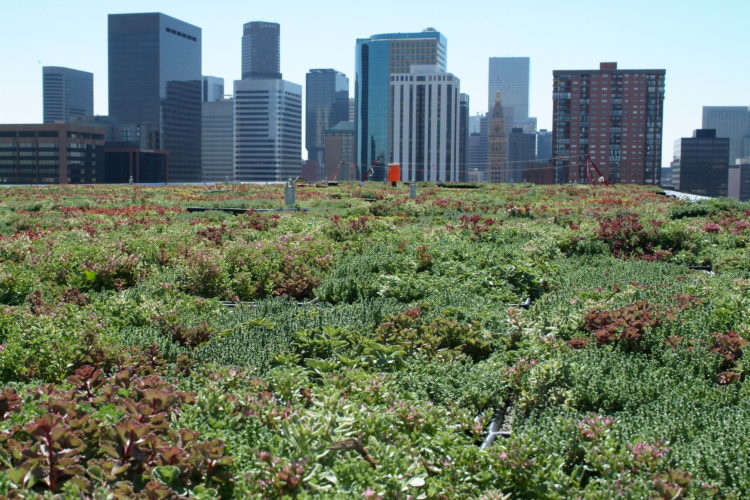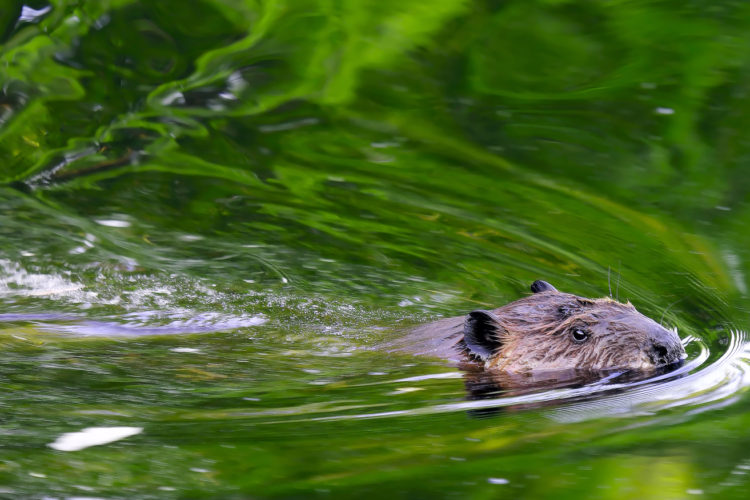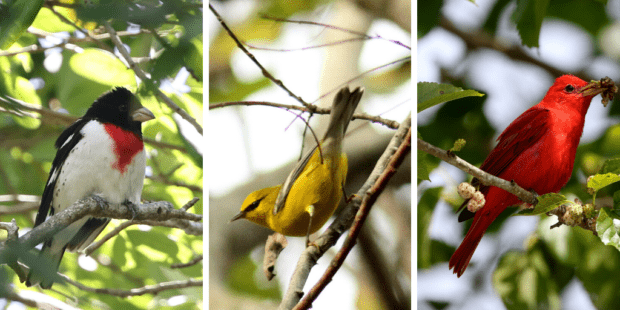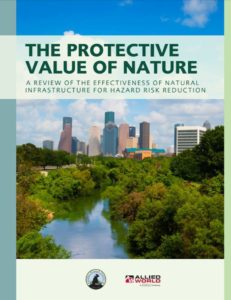We have much more to do and your continued support is needed now more than ever.
The Protective Value of Nature

A new report shows how natural systems can reduce risks from natural disasters and provide other benefits.
The National Wildlife Federation and Allied World recently released The Protective Value of Nature: A Review of the Effectiveness of Natural Infrastructure for Hazard Risk Reduction. The report summarizes the latest science on the effectiveness of natural infrastructure in lowering the risks to communities and wildlife from weather- and climate-related hazards.
“Natural infrastructure” refers to natural systems that provide essential services and benefits to society, such as flood protection, erosion control, and water purification. These systems can be completely natural ecosystems, or they can be engineered systems that use natural materials or are designed to emulate the functioning of ecosystems. For example, wetlands, reefs, and dunes can reduce the energy of incoming waves to lessen storm surge during hurricanes and to protect coastal property. In fact, a 2018 study estimated that, across the world’s reef-lined coasts, coral reefs reduce annual expected damages from storms by more than $4 billion.

Additionally, preserving and restoring natural floodplains can help absorb rainfall and floodwaters. A single acre of wetland can store as much as 1.5 million gallons of floodwater. And, up to 85% of rainfall can infiltrate the ground and be absorbed by vegetation in natural areas. In fact, one 2016 study found that the 18,000 acres of preserved floodplain and wetlands around Otter Creek in Vermont helped to reduce flood damage from Tropical Storm Irene by 84–95% for Middlebury, a nearby city. The wetlands also provide between $126,000 and $450,000 in annual flood mitigation services.
Wildlife can play a role in risk reduction, too. Recently, interest has grown in restoring beaver populations to help mitigate drought. Beaver-created wetlands can help recharge groundwater and sustain summer water flows. During times of drought, these open water wetlands can diminish in size, or even disappear. A study of wetlands and beaver activity in Canada found that during both wet and dry years, the presence of beaver populations was associated with a 9-fold increase in open water area when compared with a period when beavers were absent from the area. Thus, even during extreme drought, beaver presence can help preserve water resources and maintain wetland habitat.

The National Wildlife Federation and Allied World report showcases a great deal of evidence that natural infrastructure techniques, and other natural systems, provide noteworthy risk reduction benefits during floods, hurricanes, wildfires, and periods of extreme heat and drought.
The Protective Value of Nature also highlights that “co-benefits” such as improved air and water quality, recreational opportunities, spiritual and cultural fulfillment, and habitat improvement, add to the value of natural infrastructure. Urban forestry illustrates the concept of co-benefits nicely; aside from reducing flooding and extreme heat risks, planting trees in cities can help improve air quality to prevent cases of respiratory illness, beautify cities for residents’ enjoyment, and provide wildlife habitat, including stopover habitat for migrating birds.

The new report also finds that natural infrastructure can be as or more effective for risk reduction when compared with traditional “gray infrastructure” such as levees or seawalls. Further, natural infrastructure is frequently less expensive than gray infrastructure, especially when factoring in maintenance costs. In coastal North Carolina, one study found that property owners with bulkheads pay twice as much to repair property damage after storms and four times the annual maintenance costs when compared to property owners with more natural shorelines or revetments.
Indeed, healthy ecosystems are often adapted to natural disturbances such as floods and wildfires. Some natural infrastructure projects can actually self-repair from disturbance damage under the right conditions, in contrast to structural projects. For instance, a seawall cannot adjust to sea-level rise without maintenance or rebuilding costs, but marshes can migrate landward with sea-level rise for no cost under the right conditions.
To learn more about how natural infrastructure reduces risks from inland flooding, coastal hazards, extreme heat and drought, and wildfire, read the full report at www.nwf.org/protective-value-of-nature.






















